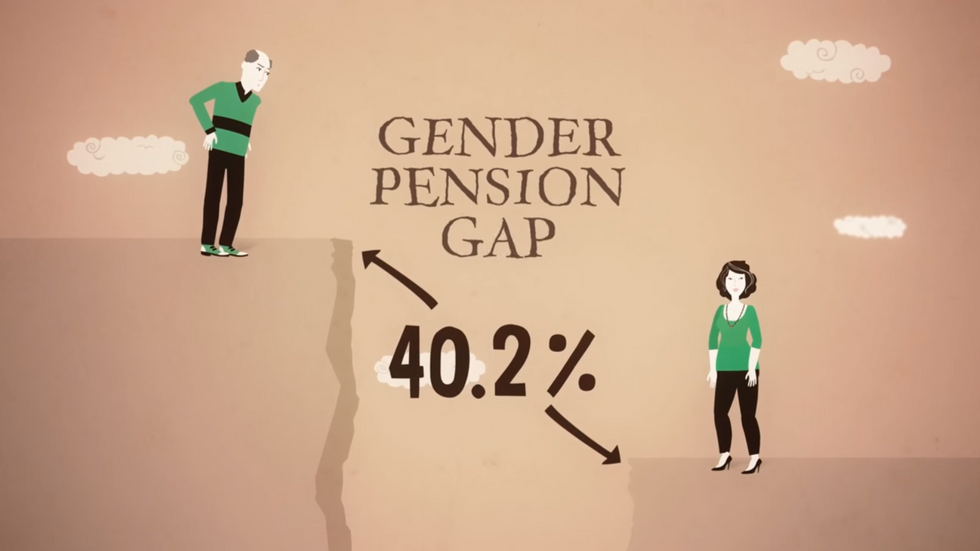Though I can commend the progress that EU institutions have made in closing the pay gap thus far, and understand that it can be a complicated process that depends on differing member state economic structures, we still have quite a ways to go. As it stands, women in the EU make 16.3% less than men, taken from an average between the 28 member states, this is an increase from the finding of a 15% pay gap. Statistically speaking, this gap is roughly equivalent to working 59 days a year for free. However these gaps are exemplified by cultural gendered norms of women being less employed and/or working less hours, likely due to work in the household, amount of desired work hours, occupational pay gaps in individual member states and possible hiring/promotion discrimination. Understandably, these gaps may be harder to fill by EU intervention, yet considering the pay gap has only shrunk by .1% between 2010 and 2014, progress on this issue is moving much too slow. In this time frame, 11 member states decreased their pay gap by at least 1% and 8 member states increased their gap by over 1%.
With the EU being first and foremost an economic union, inequalities between men and women are most easily understood in economic disparities. With the EU also being an agreement based off shared values, including equality between men and women, moving towards comprehensive solutions to the pay gap should be an essential priority. Proposed commitment to these values has been shown time and time again even in early treaties in the EU’s formation: Article 2 and 3-2 of the Treaty of Amsterdam in 1999 made equality between men and women and essential task of the Community, aiming to decrease inequality wherever possible. The Libson Treaty reaffirms these values that, quote: “the Union is founded on the values of respect for human dignity, freedom, democracy, equality, the rule of law and respect for human rights, including the rights of persons belonging to minorities” unquote. One of the aims of Article 3-3 of the Treaty on European Union is quote: “promote social justice and protection, equality between women and men” unquote. Article 8 of the Treaty on the Functioning of the European Union states that “in all its activities, the Union shall aim to eliminate inequalities, and to promote equality, between men and women.” Furthermore, the Charter of Fundamental Rights of the European Union recognizes the right to gender equality in all areas, including employment.
There are a number of solutions the EU can approach in closing this gap: A couple of years ago an EU proposal aimed to increase female presence to 40% on non-executive boards of all EU publicly-listed companies. A minimum wage increase would also shrink this gap since women are typically concentrated in lower wage sectors than their male counterparts. Upgrading the Commission’s Recommendation on pay transparency to a Decision, Directive or Regulation would make it harder for companies to get away with hiding internal pay gaps. But perhaps the most pressing issue contributing to the wage gap is in unequal pensions.
Women receive poorer pension entitlements and payments than men in most EU Member States and are both over-represented in the poorest pensioner groups and under-represented in the wealthiest. The latest available data shows a 40.2% pension gap in the EU as a whole, a 37.6% gap in the 65 and over age group, whereas the 65-74 age group has a gap over 40%. On top of that, these numbers have increased over the last 5 years. This gap in the older age brackets is partially due to buildup in pension inequality over time, social security and the death of a husband. Amount of years worked can have a big impact as well. The pension gap for women who have worked for less than 14 years sits at 64%, double than the 32% gap of those who have worked for a longer period. A number of other contributing factors to this gap include, household work, parental leave, 0 hour contracts, single headed households and part time work. Working families in the EU are increasingly dependent on pensions and the employment of the man’s income. For one in four EU citizens, pensions are the main source of income, and that number is expected to increase. A recent report by the European Institute for Gender Equality shows that 70% of couples with children would fall into poverty if the father would lose his job.
If women were extended the same pension rights as men, it would be a huge help to working class EU citizens, who are growing increasingly skeptical of the the EU as a whole. As such, a resolution for pension equality would be good for women, working people and faith in the EU as an institutional body. The legislation Constance le Grip is proposing towards pension equality calls on the Commission and the Member States to implement a strategy to curb the impacts of pension inequality and it’s underlying causes. It emphasizes a multifaceted approach that takes people’s whole working life into account and addressing the disparities between genders. This includes that the principle of equal pay for equal work must strictly be applied in the area of pensions. With the legislation up for debate today (as of 6/14/17) I hope that the parliament takes these matters into consideration when voting on this legislation.



















